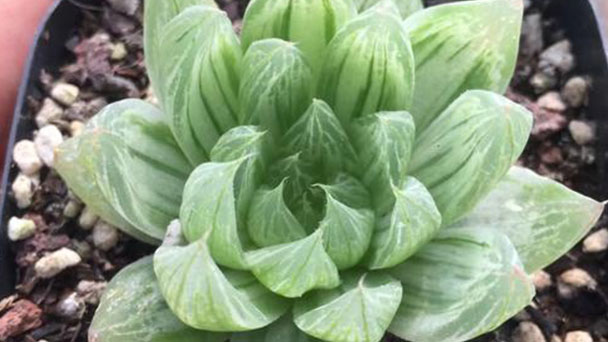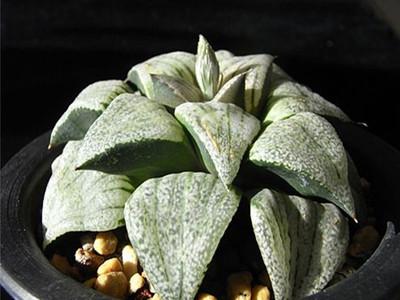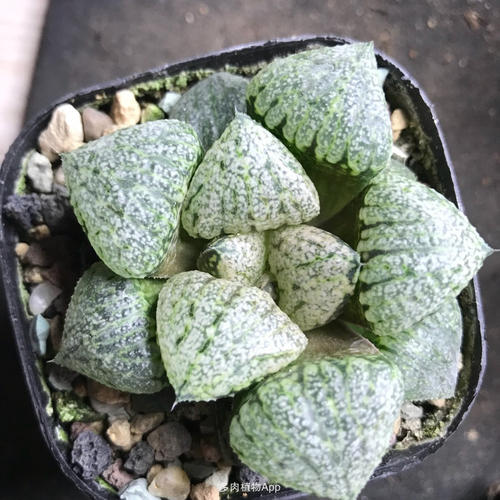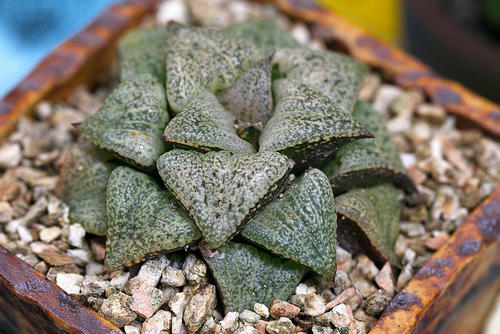Haworthia emelyae profile
Written by Maggie
Mar 31 2021

Haworthia emelyae is a small succulent plant native to Cape Province, South Africa. The fleshy leaves are dark green or reddish-brown in the roselike arrangement, with a corn apical tip, slightly raised, transparent, with irregular white patches.
Haworthia emelyae picture

Morphological characteristics of Haworthia emelyae
Haworthia emelyae is a low plant with dense white leaves with red stripes at the top of the leaves in compact rosette arrangement. It is the typical feature of Haworthia emelyae. haworthia emelyae is a very representative species of the genus Varicula in Liliaceae, and is also an excellent hybrid parent. Japanese horticulturists have used Haworthia emelyae as the parent for intra - genus hybridization and obtained a series of excellent hybrid progeny, which has high ornamental value.
The propagation methods of Haworthia emelyae
Due to Haworthia emelyae low propagation rate, it is difficult to survive and slow to grow by dividing plants, inserting leaves and seeds. Tissue culture method may be the solution to this problem.
Growing methods of Haworthia emelyae
Haworthia emelyae (red jade soil) produced in Japan: rice husk carbon (3:1) was used as the substrate. After autoclaving, it was loaded into the seedling bowl. The out of bottle seedlings were taken out after 2 days of open practice, washed off the medium with detergent solution, soaked in 0.01% ethical for 15 min, and then placed in a ventilated and dry place to dry for 3 days. After that, Haworthia emelyae is evenly inserted into the transplanted substrate and covered with plastic film to moisturizing. The Haworthia emelyae was irrigated with 0.005% ethicallin solution once a week and gradually increased light exposure. Growth was visible after more than 1 month. Proper air drying (dry transplanting) could promote the germination of new roots, relieve the physiological decay and sterilize the seedlings in Haworthia emelyae group, and the survival rate of transplanting was close to 100%.

Species taxonomy of Haworthia emelyae
In the same category as Haworthia emelyae are Kang Pingshou, Trace-Shapedodoku, Kriketshou, Nishiyama, Haworthia Mirabilis and Miyoshou, etc.
Garden use of Haworthia Emelyae
Haworthia emelyae is highly ornamental and collectible, and is a valuable plant for botanical gardens and horticultural plant lovers to collect.
The distribution area of Haworthia emelyae
Haworthia emelyae is native to South Africa.

Latest Updated
- Benefits of Bugleweed - 7 Science-backed Health Benefits
- Bugleweed Dangers & Side Effects - Is It Poisonous?
- How to Plant Evergreen Trees - What You Should Know
- When to Plant Evergreens - Grow Guide for Evergreen Trees
- 12 Wonderful Evergreen Shrubs for Your Garden
- 12 Popular Evergreen Plants with Pictures for Beginners
- When And How To Prune A Lilac Bush Like a Pro
- How to Grow & Care for Lilac Vine (Hardenbergia Violacea)
- Japanese Lilac Tree (Syringa Reticulata) Care & Propagation Guide
- Shumard Oak Pros and Cons - What to Know
Popular Articles
- Winter maintenance of Antirrhinum Majus
- How to Grow Terminalia Mantaly Tree
- How to Grow and Care for Crossostephium Chinense
- How to grow Antirrhinum Majus in spring
- Peristeria Elata (Dove Orchid) Profile: Info & Care Guide
- Underwatered Snake Plant (Sansevieria Trifasciata) - Signs And How To Fix
- How to Care for Brazilian Jasmine Plant (Mandevilla Sanderi)
- How to Grow & Care for Graptopetalum Purple Delight in Summer
- Rosa Chinensis (China Rose): Plant Growing & Care Tips
- How to Care for Baby Sun Rose (Aptenia Cordifolia)